| |
|
|
| |
Reading the water cont ...
Sat 18th February, 2012
|
|
|
|
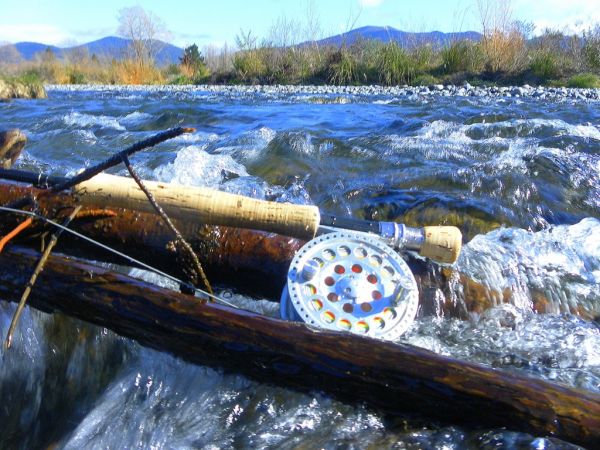
So the most obvious water to explore will be locations that offer safety and some protection from the main current...behind logs...rocks...depressions in the river bed or off to the side of the main flow near deeper water. Anywhere its easier for them to intercept the food supply as its washed downstream. Trout are lazy feeders, browns especially are masters at conserving energy.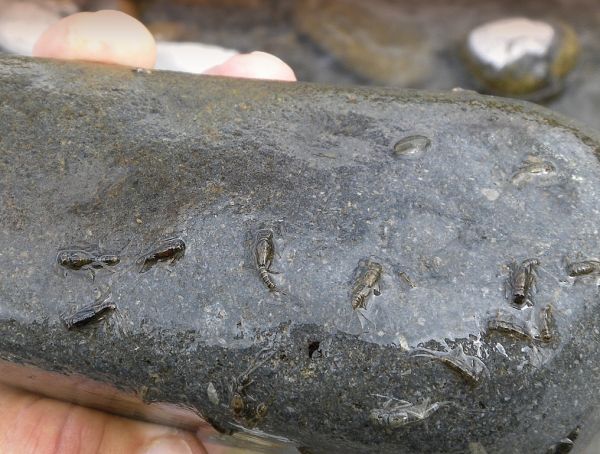
They will rarely move far from their feeding station to chase after food items unless the energy expenditure is well worth it, a large juicy cicada being the classic exception. During the spawning runs if the fish have to negotiate a particularly long shallow or fast flowing stretch of river have a look upstream and try and locate the first available area of quieter deeper water above. Slower moving water immediately downstream of rapids and riffles are also favorite places and will be rich in dissolved oxygen. This not only benefits the trout but the aquatic insects that they prey on and if all of these places also have easily accessed cover from danger then you should be on a winner.
Most good trout rivers will basically consist of a series of rapids, riffles, glides or pools this pattern repeating itself in some from along its entire length. When you decide to fish a particular stretch think about what's in front of you. Study the area and try and break it down into the most likely fish holding spots.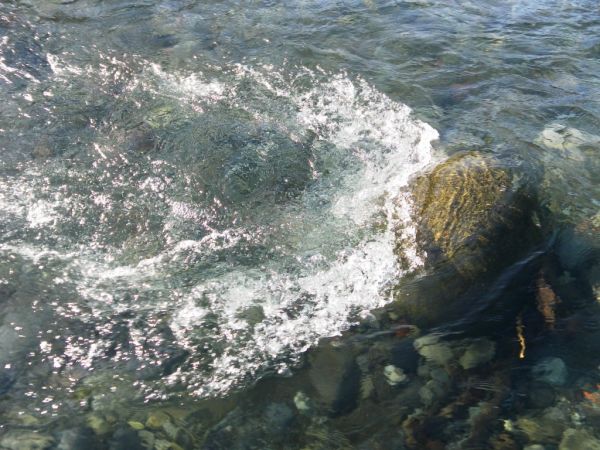 In faster water such as rapids the bottom will consist mainly of large boulders because most of the smaller stuff will have been moved elsewhere this is referred to as In faster water such as rapids the bottom will consist mainly of large boulders because most of the smaller stuff will have been moved elsewhere this is referred to as
" pocket water. " When a boulder sticks out and splits the water two main lies are created one
in front and one some way behind it where the disturbed surface flow begins to merge back together a bit like a zip. The downstream lie is just above that point and don't neglect the sides either. The same hot-spots occur below the surface when the obstruction is completely under-water but the downstream lie will be much closer to the obstructing rock or boulder. These are harder to spot but will sometimes betray their presence by creating a bulge on the surface with maybe some glassier, flatter looking water downstream of the submerged object.
Below the faster water of the rapid or riffle you will eventually encounter a pool or a glide where the water will begin to slow, deepen and be oxygen rich and as mentioned attractive to trout and their prey food. 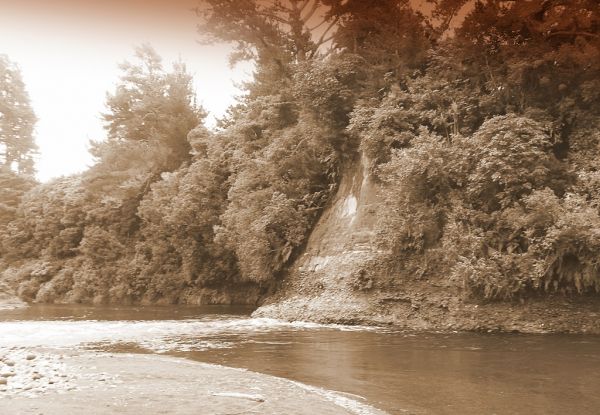 The pool itself can be broken down into separate zones ... the head ... the eye... it may also have an area called the shelf and of course the tail. In the head the obvious place to cast your flies will be along the " bubble line.". This is where most of the food being washed down will be found and because of the sanctuary of the deeper water close by is always a great place to find a few trout. You may also notice that the bottom here is probably scattered with smaller rocks etc washed down from the faster waters upstream providing shelter and cover for aquatic insects and fish alike, so a perfect place to feed or rest up. Near the head especially if the pool occurs on a bend you might find that the current swirls forming a back eddy. This is the eye of the pool and is normally on the inside of the bend opposite the side of the river which has the fastest flow. The place to try here would be along the current on the furthest side of the eddy. Sometimes this can be a difficult area to fish properly because the currents grab the line, dragging it under creating large bows which make good presentation impossible. I find it best to raise the rod keeping as much line as you can off the water, preventing it getting buried. There may also be a build up of deposit material causing the river to become shallow on one bank, we call this the shelf. Again there will be obvious changes in the flow speeds known as seams and another prime area well worth trying. As the pool gradually begins to speed up before becoming the next set of rapids or riffles is the area known as the tail. The pool itself can be broken down into separate zones ... the head ... the eye... it may also have an area called the shelf and of course the tail. In the head the obvious place to cast your flies will be along the " bubble line.". This is where most of the food being washed down will be found and because of the sanctuary of the deeper water close by is always a great place to find a few trout. You may also notice that the bottom here is probably scattered with smaller rocks etc washed down from the faster waters upstream providing shelter and cover for aquatic insects and fish alike, so a perfect place to feed or rest up. Near the head especially if the pool occurs on a bend you might find that the current swirls forming a back eddy. This is the eye of the pool and is normally on the inside of the bend opposite the side of the river which has the fastest flow. The place to try here would be along the current on the furthest side of the eddy. Sometimes this can be a difficult area to fish properly because the currents grab the line, dragging it under creating large bows which make good presentation impossible. I find it best to raise the rod keeping as much line as you can off the water, preventing it getting buried. There may also be a build up of deposit material causing the river to become shallow on one bank, we call this the shelf. Again there will be obvious changes in the flow speeds known as seams and another prime area well worth trying. As the pool gradually begins to speed up before becoming the next set of rapids or riffles is the area known as the tail.
I prefer to fish these early in the day or just before dusk and into darkness. They tend to be much shallower than the rest of the pool making the trout a little less keen to use them during the day.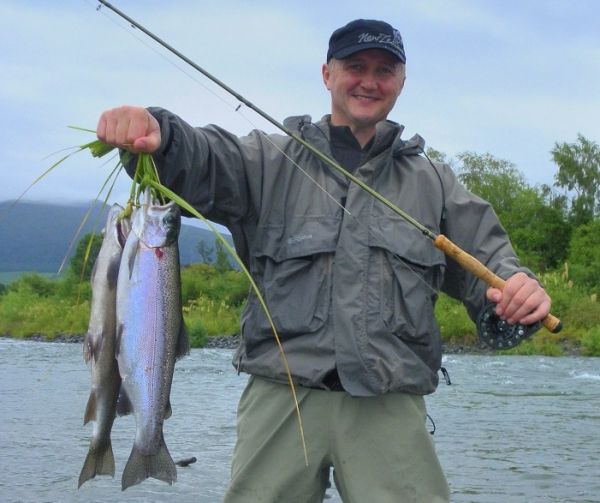 But fished at the right times especially during a good hatch can provide some fantastic sport. But fished at the right times especially during a good hatch can provide some fantastic sport.
When your fishing it will be an advantage if you can learn to spot your trout but you need to have the right weather , clear water and a good pair of Polaroid sunglasses. Windy conditions are a waste of time because there is too much surface ripple and it also helps if the sun is out. Because rainbows tend to be more active than browns they can be easier to spot however most people when they first start picking out these almost ghost-like shadowy shapes are not convinced they are in fact looking at a fish until it moves. You have to train your eyes to ignore the disturbed surface water and look right through that into the depths of the river. After a while, even in faster flowing water clear slots will appear enabling you to see much more of the objects of interest below. One trick I learned a few years ago is to look for the shape and movement of the tail because this is a distinctive outline and stands out against the river bed.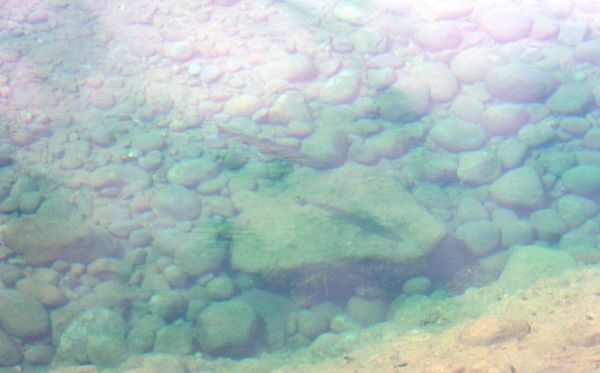 Again if your undecided that what your staring at is a fish and may be just another log or rock. Just remember it is unlikely that a fish would be hard on the bottom as would a similar shaped log or rock so it will sometimes cast a shadow. Keep an eye open for the sudden flashes reflected off the flanks of a moving trout or the opening and closing of it's mouth when feeding. With practice you will be amazed at how easy all of this eventually becomes. Again if your undecided that what your staring at is a fish and may be just another log or rock. Just remember it is unlikely that a fish would be hard on the bottom as would a similar shaped log or rock so it will sometimes cast a shadow. Keep an eye open for the sudden flashes reflected off the flanks of a moving trout or the opening and closing of it's mouth when feeding. With practice you will be amazed at how easy all of this eventually becomes.
These are just some pointers whole books have been written on the subject. The best and most enjoyable way is to get out there as often as you can and fish. The saying made famous by Gary Player "the more I practice..the luckier
I get" also applies to fishing because all of us learn a little something every time we wet a line.
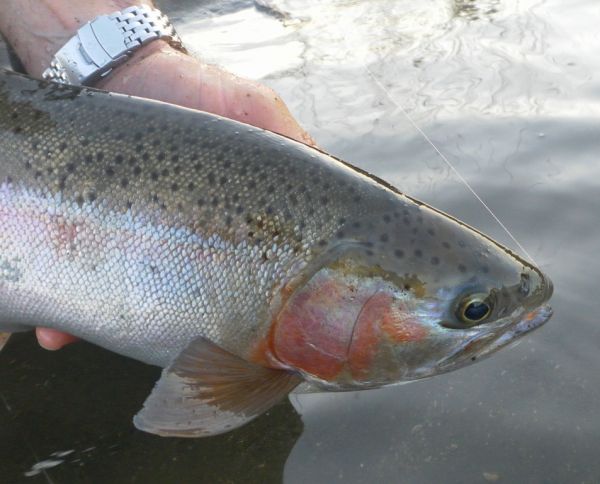
Be Lucky Guys
Mike |
|
|
| Back to Top |
|
|
|
|
|
|
|